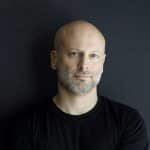View the Slideshow & Video
With the number of online video users expected to double to 1.5 billion and video traffic to be 55 percent of all consumer Internet traffic by 2016 (Cisco), it’s not surprising that marketers are starting to integrate or at least investigate adding video into their content marketing strategies. If you are investing in video, as with any other content, it’s logical to question how to optimize this content for search engines. And what exactly is video SEO anyway?
We recently caught up Kieran Farr, founder and CEO of Vidcaster, as a part of our FOUND Friday series to get some insights and tips for brands, agencies and marketers who want to learn more about video marketing and SEO.
Why is video important?
There are so many channels available to marketers now like Twitter, Facebook, Google+, LinkedIn, Tumblr, Instagram, YouTube and newcomers like Vine. It’s video’s ability to be successful as a sales medium, if done correctly, that Farr says makes video an important marketing tool.
“Marketers are becoming more savvy to realize that it’s more than just getting a play count with video,” Farr said. “It’s driving specific measurable actions where videos can be some of the most effective mechanisms to drive sales or engagement.”
The ability to measure and drive converging behavior online has been missing from the market for a long time, he said. There are questions surrounding the measuring the effectiveness of video. GinzaMetrics works with companies to help them gauge online findability. Grieselhuber pointed out that in working with these companies, he’s seeing a notable trend of companies creating new content that lives both on and off their website. Of the offsite content, he shared that video is being produced the most followed by images or slides (presentations).
What type of content is best for videos?
Video is often thought of as a tool for the top of a sales funnel or brand awareness. While it’s effective for that purpose, video can be used in different ways. “Video can be used in different parts of the [sales] funnel,” said Farr.
To create video content reaching the middle of the funnel, you don’t have to be flashy or brand specific but the content should be functional. Videos that help solve problems or address common concerns across a vertical have the highest conversion rates, Farr said. That’s why this is the area that companies should focus their efforts on, although brand centric videos have their place depending on who you are selling to and what the sales cycle looks like.
Robbins suggested that for B2B companies, it makes sense to do flashy branding videos early on and then follow with case study or product demo videos.
Farr said that they type of videos that work are “unsexy.” Explainer videos are not made to convert. They are made to generate awareness or a latent desire. If you have a SaaS product, making videos that offer bite-sized clips that illustrate even simple tasks like logging in is where Vidcaster sees the most success for video as a sales channel.
Grieselhuber shared, “When you see a video on the site, you tend to place a little bit more trust in that company, and I think it’s probably related to the fact that video, even if you don’t do the super high production videos, it’s a little bit harder to produce. It’s a little bit harder to publish.” People realize that there is effort going into your site and content and that resonates with them.
In summary, the most important part about video is not the high-quality production elements but getting your message across to your audience, helping them solve problems quickly.
How hard is to make good video content?
Farr described video production needs on a continuum (see image below). Videos that you are only going to produce once a year like a sales pitch or feature tours are great to put a lot of resources into to make a high-quality production; however frequency is important for content marketing. Most organizations cannot afford to spend a lot of resources on creating many high-quality videos, so it’s okay to spend less on videos that you can produce on a regular basis like screencast tutorials.
“They key is to create a repeatable, templatable process,” said Farr.

Think about your companies goals, define a list of videos that would help meet those goals and create a process or a checklist surrounding the production of the videos that can be followed regularly by your marketing team.
What is video SEO?
Video SEO is similar to text-based SEO, Farr shared. This means that you are still want to get your pages ranked so that someone searching for the content on that page is going to have the highest chance of finding it on a search engine.
The difference with video SEO is that you need to tell the search engines, in a different site map, that your URL includes video, along with the metadata about the video so the search engine can pull the thumbnail of the video run time and include that in search results.
Are YouTube videos SEO?
If you’re goal is to drive an action on your website, the answer is “no.” Farr said the first question you should go back to is, “Are you trying to drive awareness or conversions?”
If you are trying to drive awareness and maximize your reach, then YouTube is perfectly appropriate and it’s a great place to put that top of the funnel contact. On the other hand, if you are producing content that is only applicable to your target audience or to people who are looking specifically for that sort of content, then you should consider self hosting the content with a video platform that allows you to attract users to your own site via search engines.
Does it make sense to host videos on both YouTube and your website?
“We’re finding that it can be dangerous to host it on both places if your long-term intention is to have the primary video search results in a Google search go to your website,” said Farr. “Typically, what is going to happen is that YouTube, since it’s owned by Google, has a very high site ranking… and typically for any video the YouTube link us usually going to win.”
This can lead to you competing against yourself for rankings and traffic.
Grieselhuber posed a nice follow up question asking if a company’s competitors going after the same keywords are hosting videos on their website, should you host on YouTube? Farr responded, “We’ve actually been finding that if the search terms are properly captured, and you can can get good organic rankings, that can serve very well above and beyond YouTube in some cases.”
Learn more about GinzaMetrics’ competitor analysis tools | Watch the feature overview
What are some best practices in video SEO?
- If you are trying to generate brand awareness, publish videos to social channels like YouTube or Vine.
- If your objective is conversion and content marketing that drives lead generation, the types of content you are going to produce and the platform you host it on should be different. In this case, you want to pick a platform that will tell the search engines that you have video content on your website.
In general, creating great content provides a long term impact for your brand, even beyond paid advertising campaigns which depend on you continuing to add budget.
“SEO allows you to create new genres of content all the time,” said Grieselhuber. “Every time you publish content, you have the opportunity to spark an interest in someone’s mind, and they may share that with their network and it gets passed along. That’s why the Internet continues to grow. Video is even more powerful because it’s visual, it’s audio and you can automatically transcribe a lot of the content.”
“If you take the time to optimize video for search, you are going to get a greater benefit,” said Grieselhuber.
